Zigbee is synonymous with IEEE 802.15.4 protocol. The technology specified in this agreement is a short-range, low-power wireless communication technology. The name comes from the bee's figure eight dance, because the bee (bee) relies on the "dance" of flying and "buzzing" (zig) to shake its wings to communicate the position information of the pollen with its companions, which means that the bee relies on this way It constitutes the communication network in the group. It is characterized by close range, low complexity, low power consumption, low data rate, and low cost. Mainly suitable for the field of automatic control and remote control, can be embedded in various devices. In short, ZigBee is a cheap, low-power short-range wireless networking communication technology.
The origin of Zigbee
Zigbee, translated as "Zigbee" in China, is similar to Bluetooth. It is an emerging short-range wireless technology for sensor and control applications. 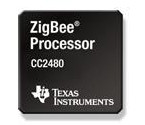
This idea was put forward in the IEEE 802.15 working group, so the TG4 working group was established and the specification IEEE 802.15.4 was formulated.
In 2002, the zigbee Alliance was established.
In 2004, zigbee V1.0 was born. It was the first specification of zigbee. But due to the hasty introduction, there were some errors.
In 2006, zigbee 2006 was launched, which is relatively complete.
At the end of 2007, zigbee PRO was launched
The underlying technology of zigbee is based on IEEE 802.15.4.
The physical layer and MAC layer directly reference IEEE 802.15.4
In the process of using Bluetooth technology, people find that Bluetooth technology still has many defects despite its many advantages. For the fields of industry, home automation control and industrial telemetry and remote control, Bluetooth technology is too complicated, with large power consumption, close distance, and a small network scale, etc., and industrial automation has become more and more demanding for wireless data communication, and For industrial sites, this wireless data transmission must be highly reliable and resistant to various electromagnetic interferences in industrial sites. Therefore, after people's long-term efforts, the Zigbee agreement was officially launched in 2003. In addition, Zigbee uses Home RF Lite, the communication protocol for home networks that it has studied before.
For a long time, the wireless communication market with low price, low transmission rate, short distance and low power has always existed. Since the advent of Bluetooth, industrial control, home automation, toy manufacturers and other manufacturers have been excited, but the price of Bluetooth has been high, which has seriously affected the willingness of these manufacturers to use. Today, these companies have participated in the IEEE802.15.4 group, responsible for the development of ZigBee's physical layer and media intervention control layer. The IEEE802.15.4 specification is an economical, efficient, low data rate (<250kbps) wireless technology that works at 2.4GHz and 868 / 928MHz, and is used in personal area networks and peer-to-peer networks. It is the basis of the ZigBee application house and network layer protocol. ZigBee is an emerging wireless network technology with close range, low complexity, low power consumption, low data rate, and low cost. It is a technical proposal between wireless tag technology and Bluetooth. Mainly used for short-range wireless connection. According to the 802.15.4 standard, thousands of tiny sensors coordinate and communicate with each other. These sensors require very little energy, relaying data from one sensor to another through radio waves, so their communication efficiency is very high.
Zigbee wireless data transmission network description 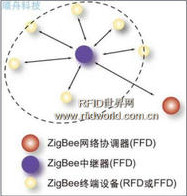
Simply put, Zigbee is a highly reliable wireless data transmission network, similar to CDMA and GSM networks. Zigbee data transmission module is similar to mobile network base station. The communication distance ranges from the standard 75m to several hundred meters and several kilometers, and supports unlimited expansion.
Zigbee is a wireless data transmission network platform composed of up to 65000 wireless data transmission modules. In the entire network range, each Zigbee network data transmission module can communicate with each other, and the distance between each network node can be from Standard 75m unlimited expansion.
Different from the CDMA network or GSM network of mobile communication, the Zigbee network is mainly established for industrial field automation control data transmission. Therefore, it must have the characteristics of simple, convenient use, reliable work and low price. The mobile communication network is mainly established for voice communication. The value of each base station is generally more than one million yuan, while each Zigbee "base station" is less than 1,000 yuan. Each Zigbee network node can not only be used as a monitoring object itself, for example, the sensors connected to it directly collect and monitor data, but also automatically transfer data from other network nodes. In addition, each Zigbee network node (FFD) can also wirelessly connect with multiple isolated child nodes (RFD) that do not undertake network information relay tasks within the range of its own signal coverage.
The self-organizing network communication method adopted by Zigbee
What is the self-organizing network used by ZigBee technology? A simple example can illustrate this problem. When a team of paratroopers airborne, each person held a ZigBee network module terminal, and after landing on the ground, as long as they were within the communication range of the network module between each other, they automatically found each other Soon a ZigBee network can be formed. Moreover, due to the movement of people, the communication between them will also change. Therefore, the module can also re-find the communication partner, determine the contact with each other, and refresh the original network. This is the self-organizing network.
Why should ZigBee technology use self-organizing network to communicate?
Mesh network communication is actually multi-channel communication. In the actual industrial site, due to various reasons, it is often impossible to guarantee that each wireless channel can always be unblocked. Just like the streets of the city, it may be caused by car accidents and road maintenance. The traffic on a certain road is temporarily interrupted. At this time, because we have multiple passages, vehicles (equivalent to our control data) can still reach the destination through other roads. This is very important for industrial field control.
Why should the self-organizing network use dynamic routing?
The so-called dynamic routing means that the path of data transmission in the network is not preset, but before transmitting data, by searching all the paths available at the time of the network, analyzing their positional relationship and distance, and then selecting one of them Perform data transfer. In our network management software, the path selection uses the "gradient method", that is, the channel closest to the path is selected for transmission first. Until the data reaches the destination. In the actual industrial site, the predetermined transmission path may change at any time, or the path is interrupted for various reasons, or it is too busy to transmit in time. Dynamic routing combined with mesh topology can solve this problem well, so as to ensure the reliable transmission of data.
Zigbee's own technical advantages â‘ low power consumption. In the low-power standby mode, two No. 5 dry batteries can support one node to work for 6 to 24 months, or even longer. This is Zigbee's outstanding advantage. In comparison, Bluetooth can work for weeks and WiFi can work for hours. 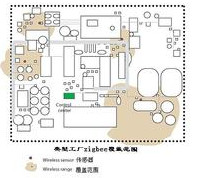
Now, TI and Micropelt of Germany jointly launched the Zigbee node of new energy. The node uses Micropelt's thermoelectric generator to provide power to TI's Zigbee.
â‘¡ Low cost. By greatly simplifying the protocol (less than 1/10 of Bluetooth), the requirements for the communication controller are reduced. According to predictive analysis, the 8051 8-bit microcontroller is used for calculation.The full-function master node requires 32KB code and fewer sub-function nodes. Up to 4KB code, and Zigbee is free of agreement patent fees. The price of each chip is about 2 dollars.
â‘¢ Low rate. Zigbee works at a lower rate of 20-250 kbps, providing 250 kbps (2.4 GHz), 40 kbps (915 MHz) and 20 kbps (868 MHz) raw data throughput rates to meet the application requirements of low-rate transmission data.
â‘£ up close. The transmission range is generally between 10 and 100 m. After increasing the RF transmission power, it can also be increased to 1 to 3 km. This refers to the distance between adjacent nodes. If the relay is used for routing and communication between nodes, the transmission distance will be even longer.
⑤ Short delay. Zigbee's response speed is relatively fast, generally it takes only 15 ms to switch from sleep to working state, and only 30 ms to connect the node to the network, which further saves energy. In comparison, Bluetooth requires 3 to 10 s and WiFi requires 3 s.
â‘¥High capacity. Zigbee can adopt star, sheet and mesh network structure, one master node manages several child nodes, and at most one master node can manage 254 child nodes; at the same time, the master node can also be managed by the upper layer network node, which can form up to 65000 A large network of nodes.
⑦High security. Zigbee provides three levels of security modes, including no security settings, the use of access control lists (ACL) to prevent illegal access to data, and the use of advanced encryption standards (AES 128) of symmetric passwords to flexibly determine their security attributes.
⑧Free license band. Direct sequence spread spectrum is used in the Industrial Scientific Medical (ISM) band, 2.4 GHz (global), 915 MHz (United States) and 868 MHz (Europe).
Zigbee frequency band
1) The transmission rate of 868MHZ is 20KB / S, suitable for Europe 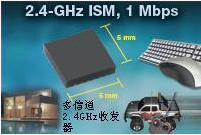
2) The transmission rate of 915MHZ is 40KB / S, suitable for the US
3) The transmission rate of 2.4GHZ is 250KB / S globally. Because the physical layers of these three frequency bands are not the same, their respective channel bandwidths are also different, respectively 0.6MHZ, 2MHZ and 5MHZ. There are 1 10 and 16 channels respectively.
Different frequency bands have different spreading and modulation methods. Although the direct spread spectrum (DSSS) method is used, the conversion method from bit to chip is quite different.
The modulation method uses phase modulation technology, but the 868MHZ and 915MHZ bands use BPSK
The 2.4GHZ band uses OQPSK
In the case of a transmission power of 0dBm, BLUETOOTH can usually use a 10M range.
And zigbee based on IEEE 802.15.4 can usually reach a working distance of 30-50 meters indoors, and if there are few obstacles outdoors, it can even reach a working distance of 100 meters.
So zigbee can be classified as a low-speed short-range wireless communication technology.
Zigbee performance analysis
1. The data rate is relatively low. The frequency band of 2.4GHZ is only 250KB / S, and it is only the rate on the link. Excluding the channel contention response and retransmission, the rate that can be actually used by the application may be less than 100KB / S, and The remaining rate may be divided between multiple nodes adjacent to the same node and multiple applications, so it is not suitable for things like video.
Appropriate application areas-sensing and control 
2. Reliability In terms of reliability, zigbee has many guarantees. The physical layer uses spread-spectrum technology, which can resist interference to a certain extent. The MAC application layer (APS part) has a response retransmission function.
The MAC layer CSMA mechanism allows nodes to monitor the channel before sending, which can avoid interference.
When the zigbee network is interfered by the outside world and cannot work normally, the entire network can be dynamically switched to another working channel.
3.Delay Because zigbee uses a random access MAC layer and does not support the channel access method of time division multiplexing, it cannot support some real-time services very well.
4. Energy consumption characteristics Energy consumption characteristics are a technical advantage of zigbee.
Generally, the application data rate carried by the zigbee node is relatively low. When communication is not required, the node can enter a sleep state with very low power consumption. At this time, the energy consumption may be only one thousandth of the normal working state. , Sleep time accounts for most of the total running time, and sometimes the normal working time is less than one percent, so a high energy saving effect is achieved.
5. Networking and routing --- network layer features zigbee large-scale networking capabilities --- 60,000 nodes per network bluetooth ----- 8 per network node.
Because the bottom layer of zigbee uses direct expansion technology, if the non-beacon mode is adopted, the network can be greatly expanded, because there is no need for synchronization and the process of nodes joining and rejoining the network is very fast, generally within 1 second, or even more fast.
Bluetooth usually takes 3 seconds.In terms of routing, zigbee supports routing of highly reliable mesh networks, so it can be deployed in a wide range of networks, and supports multicast and broadcast features, which can bring strong support to rich applications.
Application prospects of Zigbee
Zigbee is not designed to compete with Bluetooth or other existing standards. Its goal is to locate specific markets where existing systems cannot meet its needs. It has broad application prospects. The Zigbee Alliance predicts that in the next four to five years, each family will have 50 Zigbee devices, and eventually will reach 150 each family. It is estimated that by 2007, the market value of Zigbee will reach hundreds of millions of dollars. Its application fields mainly include: 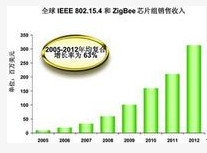
Home and building networks: temperature control of air conditioning systems, automatic control of lighting, automatic control of curtains, gas metering control, remote control of household appliances, etc .;
1. Industrial control: automatic control of various monitors and sensors;
2. Commercial: smart labels, etc .;
3. Public places: smoke detectors, etc .;
4. Agricultural control: collect various soil information and climate information;
5. Medical: Emergency call devices and medical sensors for the elderly and people with reduced mobility.
ZigBee Alliance
The ZigBee Alliance is a fast-growing non-profit industry organization with members including internationally renowned semiconductor manufacturers, technology providers, technology integrators, and end users. The alliance has developed a network application specification based on IEEE802.15.4 with high reliability, high cost performance, and low power consumption.
The main goal of the ZigBee Alliance is to provide consumers with more flexible and easier-to-use electronic products by adding wireless network functions. ZigBee technology can be integrated into various electronic products, and its application scope spans the global civil, commercial, public utilities and industrial markets. It allows alliance members to use ZigBee, a standardized wireless network platform, to design various products that are simple, reliable, cheap, and save electricity.
The focus of the ZigBee Alliance is to formulate network, security and application software layers; provide coordination and interoperability test specifications for different products; promote the ZigBee brand and gain market attention around the world; and the development of management technology.
The ZigBee Alliance formulated the ZigBee standard: IEEE802.15.4 physical layer, MAC layer and data link layer. The standard was released in May 2003. The development of the ZigBee network layer, encryption layer and application description layer has also made great progress. Version 1.0 has been released. Other application areas and related device descriptions will be released one after another. Since ZigBee is not only synonymous with 802.15.4, but IEEE only deals with low-level MAC and physical layer protocols, the ZigBee Alliance has standardized its network layer protocols and APIs. The complete protocol is used for 4K bytes that can be directly connected to the basic node of one device at a time or 32K bytes as the coordinator of Hub or router. Each coordinator can connect up to 255 nodes, and several coordinators can form a network, there is no limit to the number of routing transmissions. The ZigBee Alliance has also developed a security layer to ensure that such portable devices will not accidentally leak their identity, and that this long-distance transmission using the network will not be obtained by other nodes.
RJ45 plugs include unshielded RJ45 plug and shielded RJ45 plug for twisted pair solid or stranded cable, supports 24AWG, 26AWG, 28AWG, 30AWG, 32AWG round or flat Network Cable.
Gold-plated contacts provides reliable performance for a Gigabit Ethernet rated network
Save money by using these connectors to create your own patch cables.
ROHS compliant, and the color is Transparent, allow indicator light penetration better.
Easy for Carry, Gold plated connectors resist corrosion, improve the signal performance.
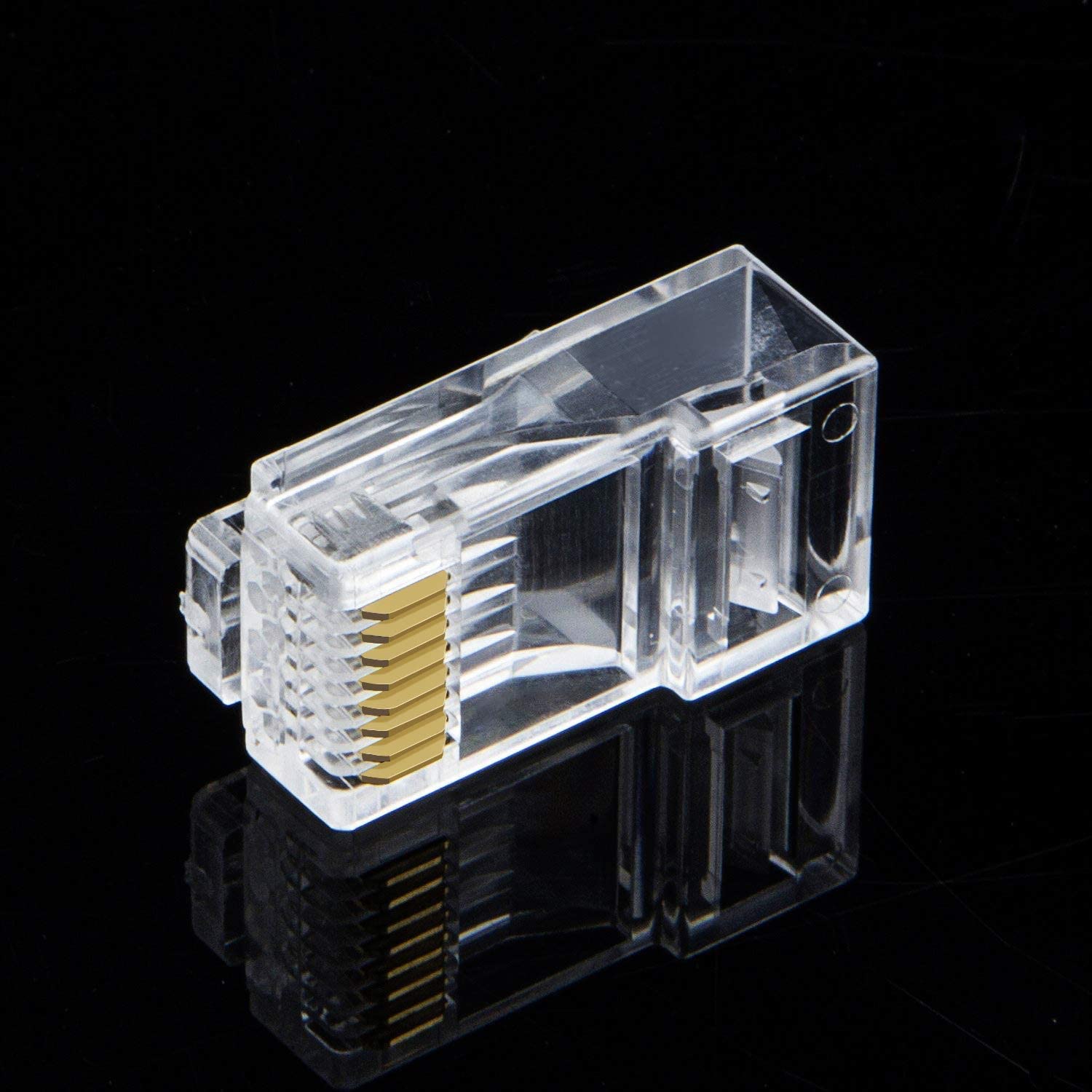
Rj45 Plug,Rj45 Wall Plug,Rj45 Plug Wiring,Rj45 Female Wall Socket
Shenzhen Kingwire Electronics Co., Ltd. , https://www.kingwires.com